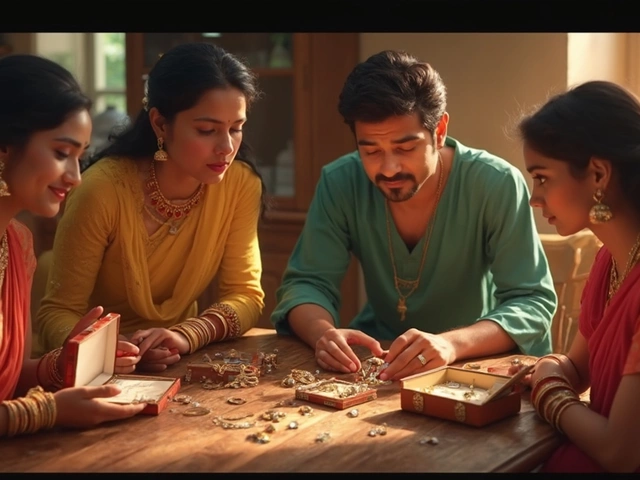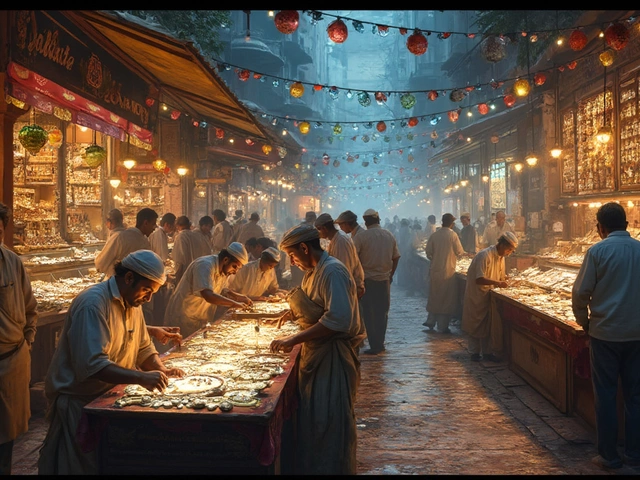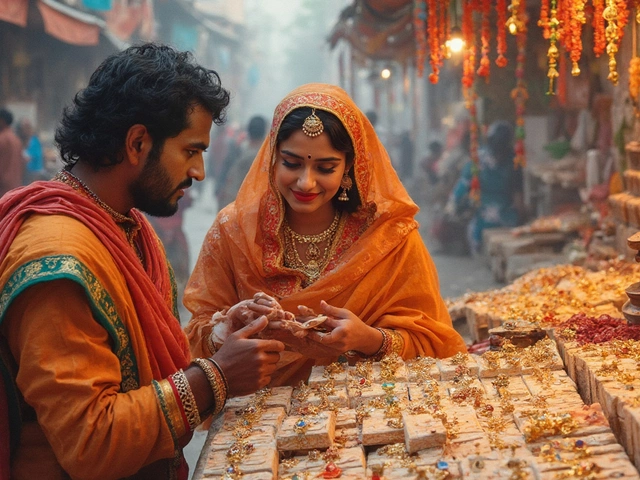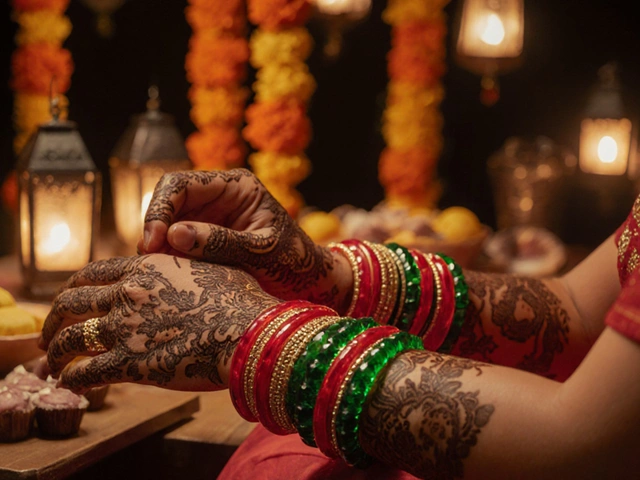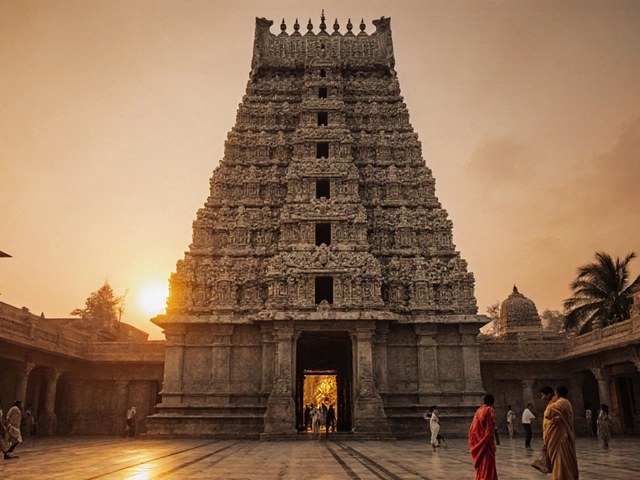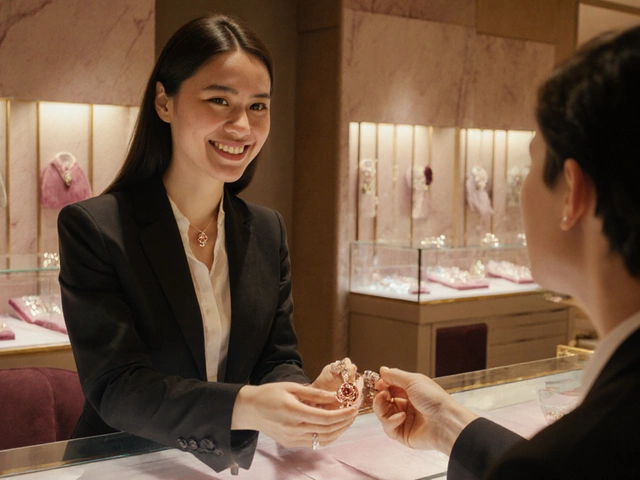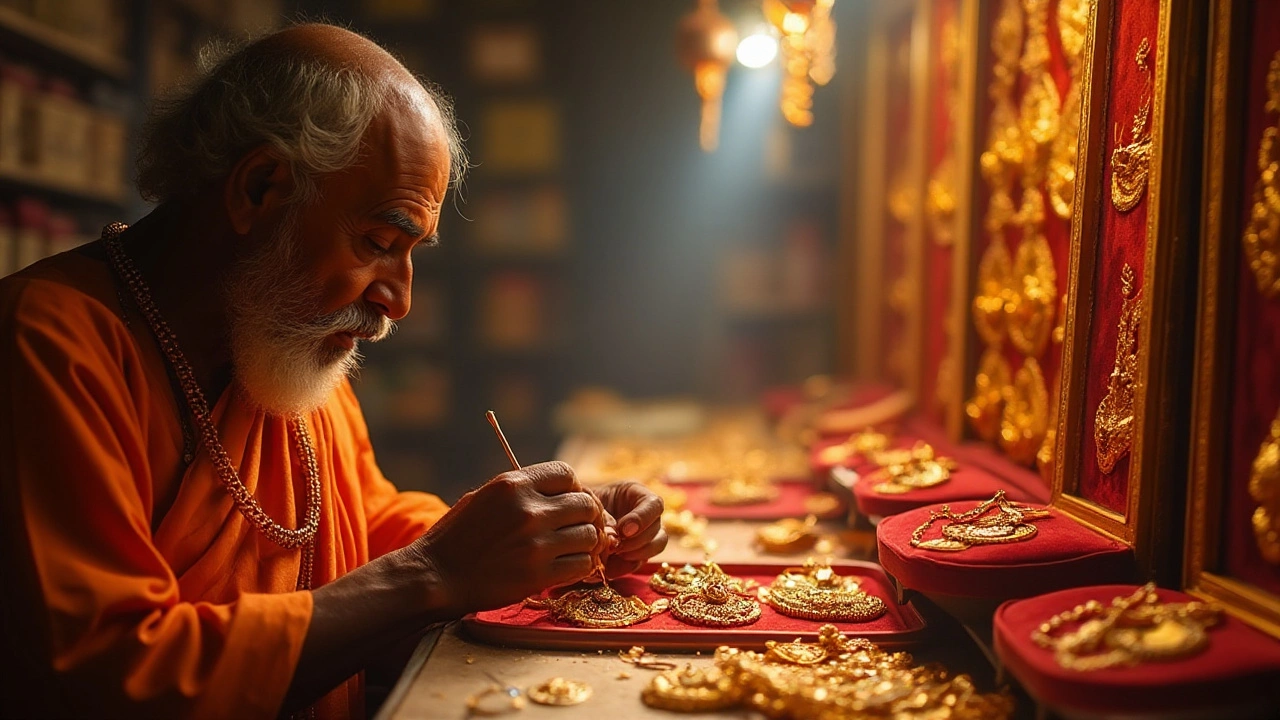
If you're an aficionado of luxury jewelry and have a penchant for pieces imbued with history and culture, India stands as a remarkable destination. Renowned for its temple jewellery, India offers enthusiasts a chance to dive deep into a tradition that dates back centuries. The allure of these pieces lies not only in their intricate designs but also in the stories and rituals they embody.
Temple jewellery initially adorned deities in South Indian temples, crafted with gold and precious stones to reflect opulence and divinity. As time progressed, these pieces became popular among classical Indian dancers and eventually found their way into modern, elegant collections cherished by jewelry connoisseurs globally.
In this exploration, we delve into the essence of temple jewellery, unraveling the artistry involved in its creation, the cultural anecdotes it carries, and the best practices for acquiring and maintaining these revered treasures.
- History of Temple Jewellery in India
- Cultural Significance and Symbolism
- Craftsmanship and Materials Used
- Popular Markets and Regions for Temple Jewellery
- Tips for Buying Authentic Temple Jewellery
- Caring for Your Temple Jewellery
History of Temple Jewellery in India
Temple jewellery from India is not merely an accessory; it is a celebratory expression of deep-rooted cultural traditions, spirituality, and artistic innovation. Originating during the Chola Dynasty around the 9th century, this jewellery style was initially crafted to adorn the deities in grand South Indian temples. Artisans devoted their skills to creating gold pieces embellished with rubies, emeralds, and pearls, intending to enhance the divine effulgence of the idols. This religious facet marked the beginning of temple jewellery's journey as it became integral during rituals and major temple festivals.
Beyond its divine affiliations, temple jewellery evolved to play a significant role in traditional Indian dance forms such as Bharatanatyam and Kuchipudi. It symbolized purity, beauty, and harmony, which dancers sought to emulate through their art. The craftsmanship involved in creating these pieces was painstaking, emphasizing details that would capture the essence of the gods and the vibrant stories woven into Indian mythology. Fine artisanship meant that each piece was not just complex but also unique, resonating with aspirational and aesthetic values cherished by Indian society.
Culturally, temple jewellery gained monumental importance, often serving as heirlooms passed down through generations, carrying stories marked by tradition and lore. Collectors today regard it as an embodiment of historic and artistic value. A celebrated jeweler from the time once noted,
"These jewels do more than decorate; they speak of eternal stories and the elegance of an era gone by."This sentiment captures the emotional connection people have with these jewels, transcending mere materialistic value.
The 20th century saw a revival of interest in temple jewellery, especially in the global markets where vintage and mystique items became fashionable. With historical phases like the British colonization impacting India, there was a natural dip in crafting these intricacies. However, post-independence, efforts to rejuvenate and promote India’s traditional crafts led to a resurgence. Today, regions such as Tamil Nadu and Kerala are celebrated hubs, bustling with artisans committed to preserving this ancient art form. Luxury jewelry collectors often visit these places to understand the tradition and even witness the craftsmanship firsthand.
In the contemporary world where the westernization of style is prevalent, temple jewellery stands as a testament to India's staunch cultural pride. Buyers worldwide can access temple jewellery through exclusive auctions or bespoke orders, pointing to its universal appeal. It remains a hallmark of South Indian culture, epitomizing the spiritual and aesthetic essence that continues to intrigue enthusiasts across the globe today. This historical richness makes India a quintessential destination for those seeking unique and meaningful pieces that go beyond ornamental allure.
Cultural Significance and Symbolism
Temple jewellery holds a place of significant cultural value and deep-rooted symbolism in India. Characterized by its exquisite designs and intricate details, temple jewellery has transcended its original religious function. Initially, these ornate pieces were crafted to adorn the idols of deities in temples of South India, serving as offerings to the divine and showcasing the worshippers' devotion. The jewellery, often made of gold and embellished with precious gems like rubies, emeralds, and pearls, reflects the opulence of a bygone era. Each piece is imbued with symbolism, representing various aspects of Hindu mythology and deities' attributes. For instance, motifs like the lotus symbolize purity and enlightenment, while peacocks represent beauty and spirituality.
Over time, temple jewellery has extended its influence beyond religious contexts into cultural and artistic realms. It became an essential part of the costumes for traditional dance forms like Bharatanatyam and Kuchipudi, which are esteemed for their storytelling and expression. These art forms make generous use of temple jewellery, not just for its aesthetic appeal but as a medium to convey emotions and divine stories through dance. A dancer adorned with temple jewellery becomes a living embodiment of a deity, enhancing the spiritual connection between the performer and the audience. The cultural importance of such jewellery is undeniable, serving as both an artistic expression and a deep spiritual communicator.
Beyond its religious and artistic significance, temple jewellery functions as a symbol of pride, status, and heritage in South India. Families pass down pieces through generations, turning them into heirlooms that carry personal and historical narratives. This tradition endows the jewellery with additional sentimental value, making each item not just a piece of art, but also a custodian of family stories and legacies. In many ceremonies, wearing temple jewellery is a ritual in itself, reinforcing cultural values and connection to heritage.
Its rich historical lineage also makes temple jewellery a sought-after collectible for connoisseurs of luxury jewelry worldwide. Collectors are not just drawn by the craftsmanship but by the stories each piece holds—stories of devotion, artistry, and heritage that transcend temporal and spatial barriers. As Marcus, a well-respected collector once mentioned,
"Temple jewellery is not just an accretion of metal and stones, but a narrative wrought in gold, a testament to humanity's quest for divinity and artistry."Such perspectives highlight the importance of preserving these treasures, ensuring that their beauty and symbolism continue to inspire future generations.
In reflecting on the cultural significance and symbolism of temple jewellery, one cannot ignore the underlying philosophical aspects. The intricate processes involved in crafting these pieces represent the painstaking efforts of artisans who work diligently to perfect each detail, thereby creating art that venerates the divine. Many artisans are descendants of those who've been perfecting the craft for centuries, maintaining traditional techniques while occasionally integrating modern influences. Their dedication to the craft ultimately elevates temple jewellery from mere adornment to a meaningful cultural artifact.
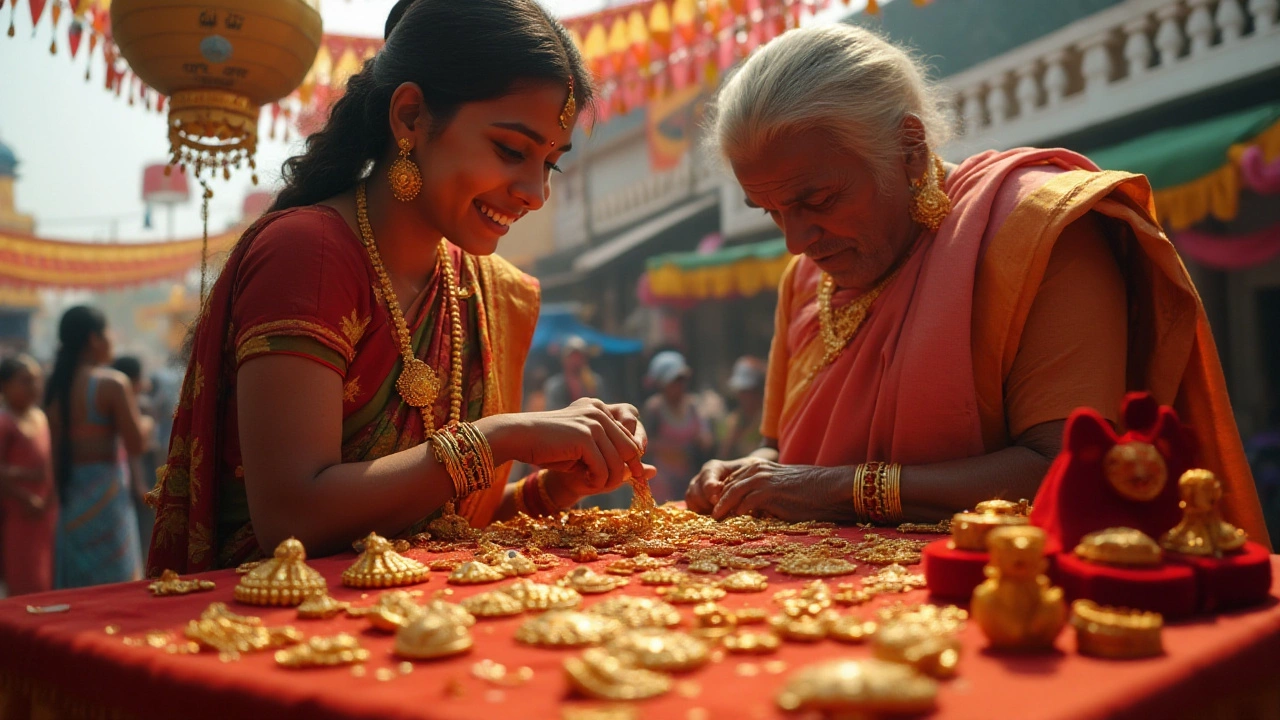
Craftsmanship and Materials Used
The creation of temple jewellery in India is a testament to an age-old tradition steeped in meticulous artistry and devotion. The primary material used in these exquisite pieces is gold, chosen for its lustrous quality and its symbolic significance in representing wealth, immortality, and divinity. Skilled artisans, known locally as Swarnakars, employ techniques passed down through generations, ensuring that each piece maintains its traditional character while embodying the unique touch of its maker. This dedication to craftsmanship is evident in the intricate detailing of the jewelry, which often features motifs inspired by gods, goddesses, and celestial beings.
The process begins with the selection of high-quality gold, often 22 or 24 karat, which is then carefully melted and molded into intricate shapes. Stones such as rubies, emeralds, pearls, and uncut diamonds are painstakingly embedded into these settings, adding vibrancy and richness to the designs. These stones are not merely decorative but hold meaning and are believed to bring good fortune and positivity to the wearer. Temple jewellery often mirrors the architectural grandeur of South Indian temples, with ornate carvings and embellishments that reflect the region's spiritual and cultural ethos.
A fascinating aspect of this craftsmanship lies in the precision and patience required to achieve the desired effect. Each crafting step is a methodical endeavor, often involving tools and techniques that have remained unchanged for centuries. The ancient art of Kundankari, for instance, involves setting stones with gold foil between them, which adds a reflective sheen and intricate elegance to the jewelry. In many workshops, artisans still infuse their pieces with the same level of care and ritualistic fervor that ancient goldsmiths employed, creating a bridge between past and present.
"Indian temple jewellery is more than mere adornment; it's a celebration of time-honored traditions and cultural narratives," says Rohit Bal, a noted fashion designer known for incorporating traditional elements into contemporary designs.
The artisans often work long hours under demanding conditions, driven by a passion for perfection that can only be attributed to a deep-seated respect for their craft. The tools they use, such as chisels, hammers, and specialized engraving implements, each have their own roles in the delicate dance of bringing metal to life. Given the complexity of these designs and the meticulous craftsmanship involved, creating a single piece can take several weeks, if not months. This dedication ensures that each piece is not only a work of art but a keepsake meant to last for generations.
The Elements of Design
Designs in temple jewellery take inspiration from a variety of sources, most notably the deities and symbolic elements found within Hindu temples. Florals, peacocks, and intricate swirls are common motifs, each carrying specific meanings and often imbued with spiritual connotations. More than just decorative, these designs are said to endow the wearer with auspicious qualities and protection. Artisans strive to capture the fluidity of life through these static materials, embedding every piece with a unique story.
Finally, it's worth noting the continuous evolution within this tradition as artisans incorporate modern elements and inspirations to meet contemporary tastes. Jewelry consumers today seek pieces that not only resonate with their personal aesthetics but also tell stories of cultural richness. By maintaining traditional techniques while embracing modern design principles, artisans ensure that luxury jewelry continues to captivate and enchant, proving once again the timeless appeal of fine Indian craftsmanship.
Popular Markets and Regions for Temple Jewellery
Embarking on a journey to purchase temple jewellery begins with knowing the epicenters of this artistic tradition within India. South India is widely regarded as the heartland of temple jewellery, with regions such as Tamil Nadu and Karnataka being most notable. The city of Chennai, Tamil Nadu's capital, plays host to numerous markets and boutiques where one can find authentic and exquisitely designed pieces. Known for its creativity, Mylapore in Chennai holds a reputation for exceptional luxury jewelry creations that captivate international buyers.
Bangalore in Karnataka also emerges as a vibrant hub for temple jewellery. With its bustling markets and workshops, the city offers an abundance of options for both antique and modern designs. A stroll through the vibrant lanes of Commercial Street unveils a plethora of options, where traditional motifs meet contemporary craftsmanship. Many retailers and designers here pride themselves on ethically sourced materials, ensuring that each piece not only dazzles the eye but also respects environmental and social values.
Furthermore, Kerala deserves a special mention as a region rich in tradition and artistry in temple jewellery. The thriving craft industry over here is sustained by local artisans who pass down their skills across generations. Places like Thrissur are a goldmine for anyone keen on adding genuine pieces that exude both cultural and aesthetic value to their collection. Perhaps what makes Kerala truly remarkable is the meticulous attention to detail found in each adornment, reflecting the cultural narratives of the region.
"The enduring charm of temple jewellery lies in its ability to tell stories of heritage and spirituality through gold and gemstones," once noted by a curator of the iconic Chennai Museum.
To savvy collectors and jewellery enthusiasts seeking genuine pieces, marketplaces like the renowned Mamallapuram are indispensable. An ancient town steeped in history, Mamallapuram hosts annual fairs and exhibitions where craftsmen showcase their masterful creations, encapsulating the spirit and ideology of temple jewellery.
Understanding the significance of these markets extends beyond the geographical. It's about connecting with the artisans who breathe life into these sacred pieces. Many tourists and locals alike are advised to visit during festival times or jewellery exhibitions, as these events often present special collections not usually available in standard retail settings. Whether wandering through the lively bazaars or engaging in insightful conversations with the makers, each experience contributes to a deeper appreciation of the intricate artistry and cultural reverence behind temple jewellery.
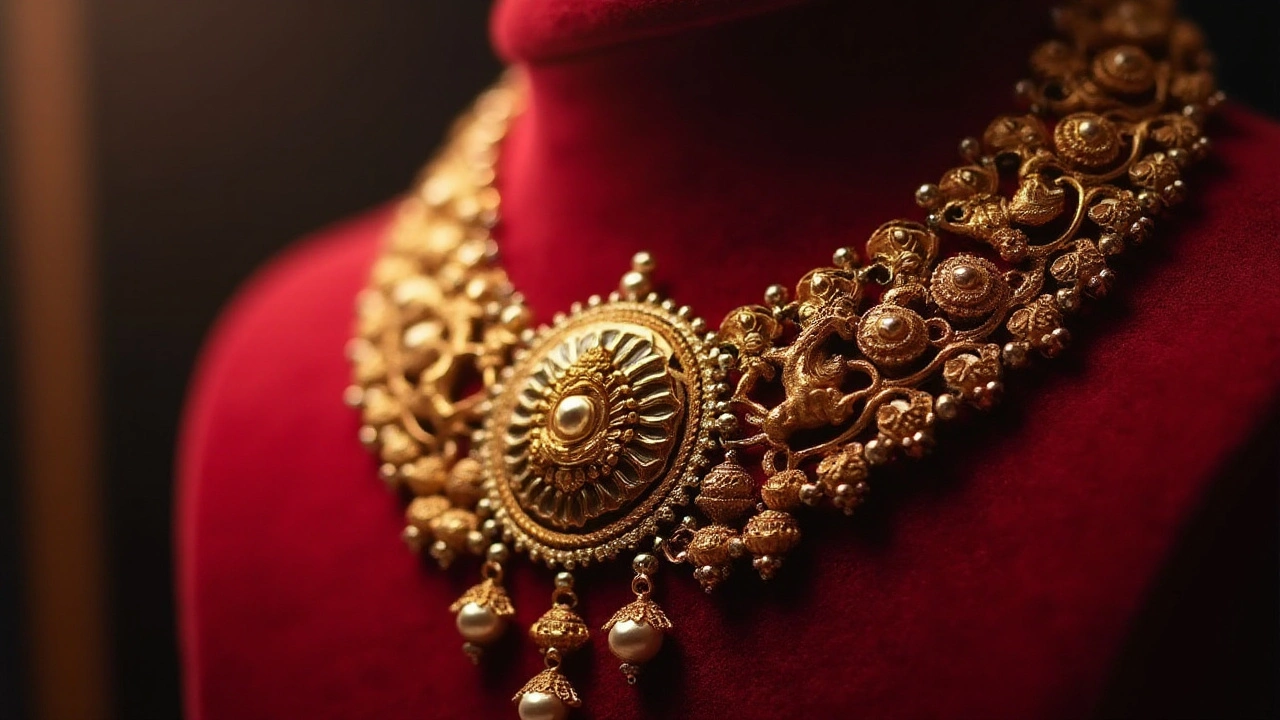
Tips for Buying Authentic Temple Jewellery
Purchasing authentic temple jewellery entails a journey into the depths of India’s rich artisan heritage, but it’s crucial to arm yourself with the right knowledge to identify genuine pieces. The market is flooded with imitations, and distinguishing a real masterpiece requires an understanding of its unique characteristics. Begin by exploring the historical and cultural contexts that each piece carries; a knowledgeable vendor will recount the provenance of their jewelry with ease, echoing the spiritual and traditional significance ingrained in these exquisite artworks. Before committing to a purchase, it’s wise to visit several reputable shops to gain a comparative understanding of their offerings.
Material is an essential consideration. Authentic pieces typically utilize high-quality gold, sometimes studded with precious stones like rubies, emeralds, and pearls. Look for hallmark stamps or certifications that confirm gold purity; genuine luxury jewelry usually bears these markers. Keep an eye out for intricate detailing and craftsmanship, as these are hallmark traits of true temple jewellery. It's not just about visual beauty; each design element usually holds symbolic meaning, reflecting the spiritual ethos from which it originated. Many vendors keenly share stories and explanations about the iconography displayed in the jewelry pieces.
It’s also beneficial to study some of the different styles and motifs that are typical of temple jewellery. These often include motifs like elephants, peacocks, and flowers, each symbolizing various aspects of life and divinity. By familiarizing yourself with these symbols, you can better assess the authenticity and aesthetic value of a piece. Additionally, consider seeking out recommendations from trusted collectors or connoisseurs who can guide you to reliable sources. A good starting point is connecting with experts in Indian jewelry, who often exhibit their private collections in galleries or online platforms.
When inspecting a piece, gently handle it to assess its weight and texture. Authentic temple jewellery often has a certain heft due to the materials used. Pay attention to the finishes; a smooth, flawless finish is often indicative of high-quality craftsmanship. It's also worthwhile to verify the seller's return policy, which offers a safety net should you realize later that the piece wasn't exactly what you expected. Additionally, you might request for a written note that details the history and details of the piece, which serves as a valuable document both for personal records and potential re-sale value.
India is renowned for its bustling jewelry markets, and as such, ensure that you engage with sellers who are transparent about their sourcing. Often, authentic temple jewellery is made by families of artisans who have passed down techniques through generations. These artisans are usually part of cooperative groups or associations that maintain the integrity and tradition of their craft. Engage with these communities when possible. Additionally, choosing such vendors supports sustainable practices and helps preserve the cultural heritage associated with temple jewellery.
"When you buy a piece of temple jewellery, you're not just securing an ornament; you're cherishing a fragment of living history," says Shobitha Rao, a seasoned jewelry historian based in Bangalore.
By following these guidelines, you can be more assured in your pursuit of luxury jewelry that is both beautiful and authentic. Remember, patience and curiosity are your best guides in navigating the vibrant world of temple jewellery.
Caring for Your Temple Jewellery
Owning a piece of temple jewellery is akin to holding a fragment of history, a tangible connection to the rich tapestry of Indian culture and artistry. Given the meticulous craftsmanship and the precious materials involved, proper care is essential to maintain their allure and value over time. Preservation begins with understanding the fragile nature of materials like gold and the precious stones that often embellish these pieces. The delicate settings and intricate carvings demand a gentle touch and knowledgeable handling.
Exposure to chemicals found in cosmetics, perfumes, and cleaning products can tarnish the metal and dull the stones. Always adorn your precious luxury jewelry as the last step before stepping out, ensuring that lotions and sprays have settled. Moisture is another adversary; it can discolor metal and affect the adhesiveness of stone settings. Thus, removing your adornments before venturing into water-heavy activities like swimming or bath is advisable.
Storage is another pivotal factor in the care of temple jewellery. Instead of lumping them together in a crowded box, which could lead to scratches and tangles, store each piece in its own soft cloth pouch or lined case. This technique not only preserves their polish but also saves them from unwanted contact. Consider using tarnish-resistant strips in your storage areas; these small supplements can ward off the dulling tarnish that might develop over time.
"Jewelry is about memories, and temple jewellery, with its cultural significance, holds many stories. Proper care can make these stories last for generations," said Anjana Parekh, a renowned jeweler from Mumbai.
Regular maintenance and cleaning with a specific non-abrasive jeweler's cloth are essential for keeping your collection in pristine condition. For deep cleans, a periodic professional cleaning might be a worthwhile investment, ensuring any nuanced issues are addressed by experts. Avoid DIY methods using baking soda or vinegar, as such home remedies, while popular, can inadvertently damage the piece.
With any antique or ornate designs, remaining vigilant for damage is crucial. It involves inspecting for any loose stones or compromised settings periodically. Your hands, clean and dry, are often the best tools for this task, as they can detect nuances that might escape the naked eye. Prevention, in this context, is always more desirable than repair, both in cost and maintaining historical authenticity.

